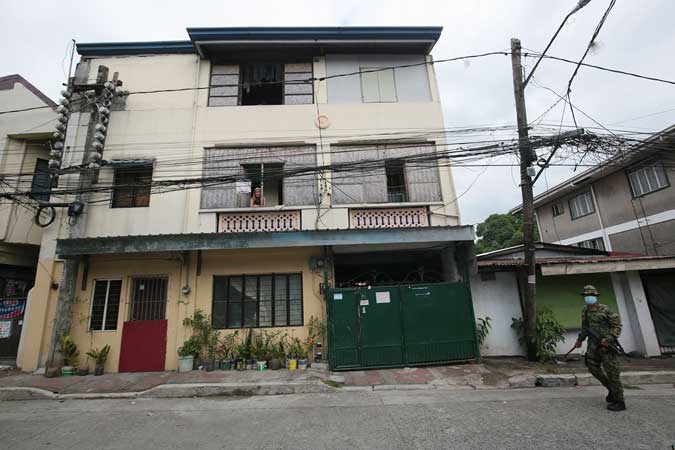Despite the rise in the number of coronavirus disease 2019 (COVID-19) cases in the last two weeks, the economy cannot afford another nationwide “lockdown” like what was imposed in the second quarter of 2020. Even a region-wide enhanced community quarantine (ECQ) will be extremely difficult to implement particularly in business centers like Metro Manila, Metro Cebu, and Metro Davao.
People need to go to work, to earn a living; businesses need to stay open, to survive. And, as people continue to move around, presumably for “essential” reasons, then the virus unfortunately gets a free ride. It can be argued that the “surge” since the start of March could have been avoided, if people strictly followed protocols, but we are past that now.
Cases are on the rise. We have hit a new wave. Some researchers forecast about 3,000 cases per day by end-March for Metro Manila alone. Nationwide, the projection is about 5,000 to 6,000 cases per day, from around 3,000 now. We peaked at about 7,000 cases daily in August 2020, when we had to revert to ECQ for two weeks for the sake of health workers.
Two weeks ago, people were already talking about further easing restrictions, to help fight poverty and hunger. Cases were down at the time. But, President Duterte still opted to delay the shift to the most lenient restriction level until at least two million people have been vaccinated. However, in just over 10 days, things have turned for the worse.
On Tuesday, GMA News reported that quarantine restrictions would not be eased if the number of COVID-19 cases would continue to rise. Even if two million people have already been vaccinated, said Cabinet Secretary Karlo Nograles. The other factors to consider now are attack rate, hospital bed utilization rate, and other socio-economic factors, he added.
But he also said that shifting to the more lenient modified general community quarantine (MGCQ) by April is still not out of the question, noting that it was “too early to tell.” The matter is still up for discussion, he said. My best guess, however, is that MGCQ will still not happen by next month. Not even in May. Perhaps in June, if COVID-19 cases start going down by end-March.
Some experts point to more infectious variants of COVID-19 as the reason for the surge since March 5, although Health officials are more inclined to blame non-compliance with health measures. Personally, I am inclined to believe that more infectious variants are the bigger factor. Since early March, more cases of the UK or South African variants have been detected in the country, and this could not have been just a coincidence.
Metro Manila has been under GCQ for months now. We have not eased restrictions any further in the last two weeks. In this line, the level of people’s “compliance” with minimum health standards and protocols have not changed significantly, based on personal observation. How then can “non-compliance” result in a surge?
In Makati City, for instance, the total number of active COVID-19 cases was only at 261 on Feb. 21. Prior to this, active cases were below the 200 level for some time. Since then, however, it has climbed, to 425 by Feb. 28, to 536 by March 5, and to 632 by March 8. In a span of 16 days, 371 cases were added. Cases more than doubled in two weeks.
But from Feb. 21 to March 8, no changes in restrictions had happened. The number of businesses open had not gone up, and the number of workers reporting for work had not changed. In short, we still have relatively the same number of people moving about daily in the city. Protocols have not changed either, so it can be assumed that the level of compliance has been maintained. There is nothing to indicate that we should think otherwise. And yet, the number of cases more than doubled in two weeks?
And this brings me back to my argument against blaming “non-compliance” with health protocols as the cause of the “surge” since late February. As our household’s designated market person, or the one who goes out periodically to procure essential goods, I have not noted a significant increase in the number of people moving about in Makati, or a significant decrease in the level of people’s “compliance” with health protocols.
Moreover, the bulk of new cases are in Makati barangays closest to Pasay City, where cases have also been on the rise and where more infectious variants have been detected. This does not scientifically explain the reason for the surge in the city, but it also cannot be just coincidence that there are more cases in the last two weeks in the western side of Makati.
At the same time, the Department of Health (DoH) does not appear to have provided any data or statistics or information to prove that non-compliance with health protocols is to blame for the surge. How then do we prove this assertion?
The President’s spokesman has said there was no need to panic, despite the surge, since the country was still capable of caring for those with serious conditions. “Even if the number of cases increases, we are ready to treat those with serious conditions, which is about two to three percent of the cases,” he said. He also said reverting to strict quarantine was unwarranted.
While I agree that panic is unwarranted, I also believe that the “surge” is a cause for concern. And given the indicators now, we cannot afford to be complacent. We cannot just rely on our capacity to care for the sick. And we cannot wait for the worst-case scenario before we act. We need to ask ourselves if there is anything else that we can do meantime. Or, do we just have to brace for the worst and wait it out?
Marvin Tort is a former managing editor of BusinessWorld, and a former chairman of the Philippines Press Council

